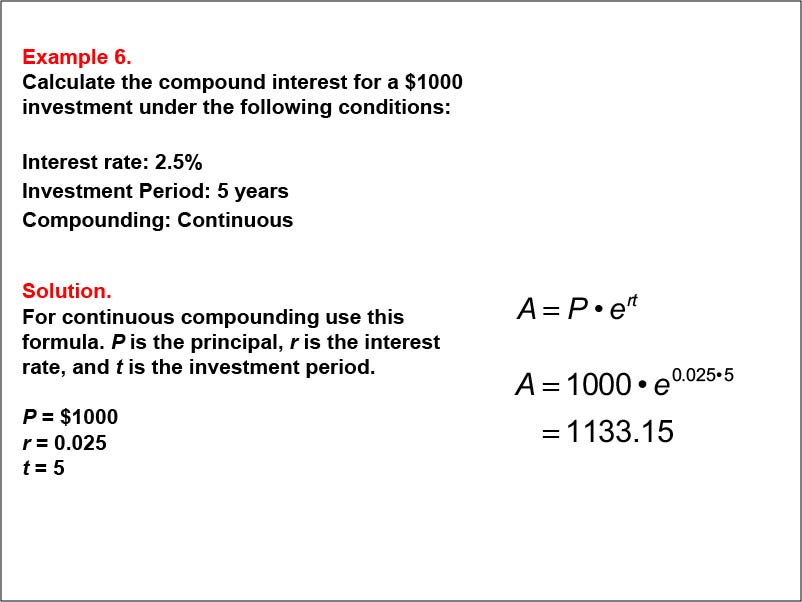
Display Title
Math Example--Math of Money--Compound Interest: Example 6
Display Title
Math Example--Math of Money--Compound Interest: Example 6

Topic
Math of Money
Description
This example demonstrates the calculation of compound interest for a $1000 investment at a 2.5% interest rate, compounded continuously over 5 years. Using the formula A = P•ert, where P = 1000, r = 0.025, and t = 5, the final amount is calculated as $1133.15.
Compound interest is a key concept in financial mathematics that shows how investments grow exponentially over time. This example illustrates continuous compounding, which offers insight into how frequently compounding affects investment growth. By exploring various compounding scenarios, students can better understand the practical applications of compound interest in real-world finance.
Seeing multiple worked-out examples helps students grasp the nuances of compound interest. It allows them to compare different scenarios, recognize patterns, and understand the impact of various compounding frequencies. This approach enhances their problem-solving skills and prepares them for more advanced financial calculations.
Teacher Script: "Let's explore continuous compounding with a $1000 investment at a 2.5% interest rate for 5 years. We'll use the formula A = P•ert to see how this method affects the final amount compared to other compounding frequencies."
For a complete collection of math examples related to Compound Interest click on this link: Math Examples: Compound Interest Collection.
| Common Core Standards | CCSS.MATH.CONTENT.7.RP.A.3, CCSS.MATH.CONTENT.HSF.LE.A.1, CCSS.MATH.CONTENT.HSF.IF.C.8.B |
|---|---|
| Grade Range | 8 - 12 |
| Curriculum Nodes |
Algebra • Exponential and Logarithmic Functions • Compound Interest |
| Copyright Year | 2013 |
| Keywords | interest, compound interest, math of money |